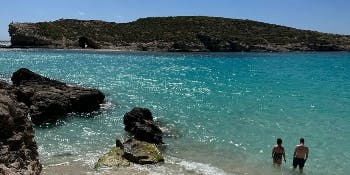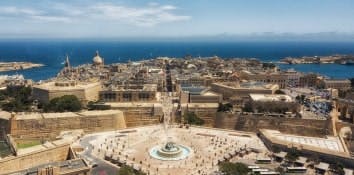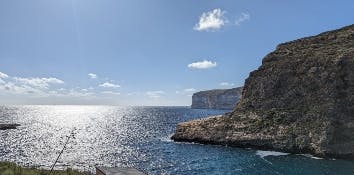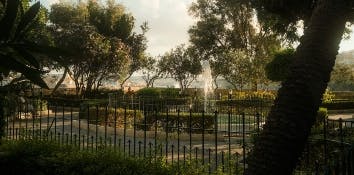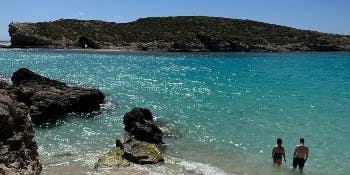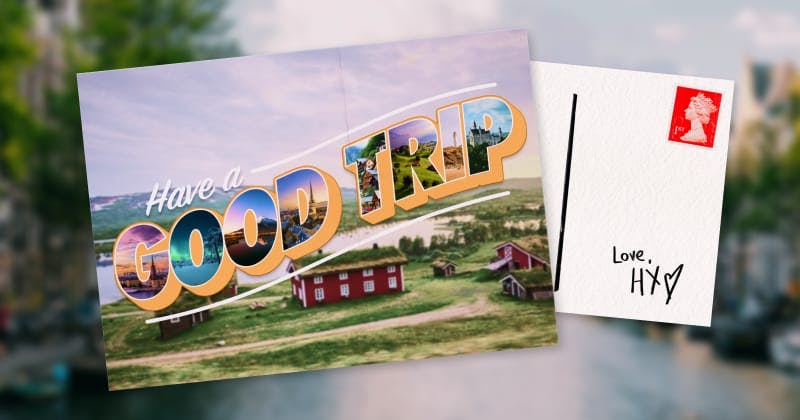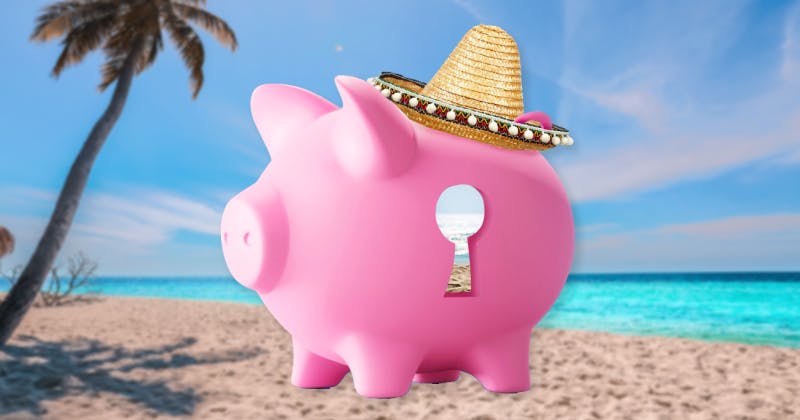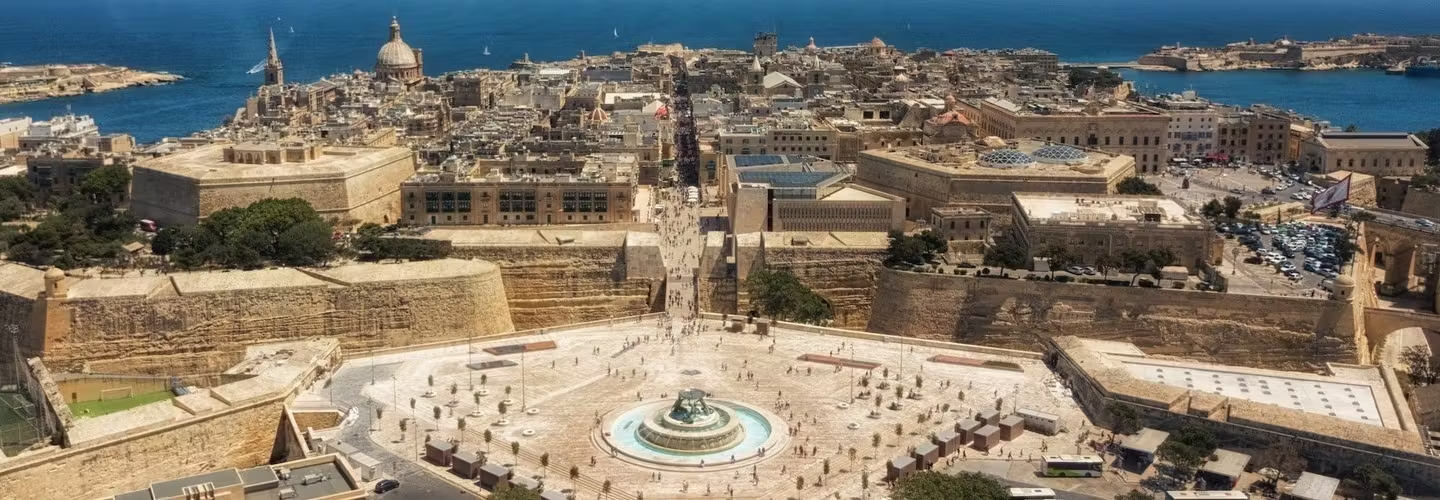
Malta Travel Guide
With more than 7,000 years of history and some of the oldest ruins in the world, Malta is filled to bursting with fascinating things to do and learn, and eye-poppingly beautiful things to see, from historic cities to blissful lagoons.
What you'll find in this guide:
Top things to do in Malta
Practical Info
Malta weather
Best time to visit Malta
Getting to Malta
Getting around Malta
Where to stay in Malta
Malta's best beaches
What to eat in Malta
Visiting Gozo and Comino
Malta for families
Accessibility in Malta
Malta for LGBTQI+ travellers
Sustainable tourism in Malta
Malta FAQs
GMT +1
Euro EUR
Maltese and English
Type G (same as UK)
Just over 3 hours
Some facts about Malta
The country of Malta is made up of a group of small islands, and only the three largest – Malta, Gozo and Comino – are populated. The islands lie in the geographical heart of the Mediterranean, making it a strategic naval and commercial hub for thousands of years.
Malta has been occupied by many cultures over the course of its history, including ancient Greeks and Romans, as well as the French and later the British. It achieved independence in 1964 and went on to join the EU in 2004.
Practical Info
Culture and etiquette
Religion
The majority of the Maltese population identify as Catholic.
Tipping
A tip of 5 to 10% is appreciated for good service. Remember to check a service charge hasn't already been added to your bill.
Smoking
Smoking is banned in enclosed public spaces like bars, restaurants and public transport.
Language 101
Malta has two official languages – Maltese and English. The locals prefer to speak Maltese as, being a particularly unique European language because of its Arabic origins, it forms part of their national identity. English is spoken fluently by much of the population though, so you probably won't encounter many language barriers.
If you do though, here are some simple Maltese phrases to get you started:
- Hello – Hello
- Goodbye (informal) – Caw (chaw)
- How are you? ?? Kif int?
- Yes – Iva
- No – Le
- Please – Jekk jogħġbok (yek yoh-jbok)
- Thank you – Grazzi hafna
- Do you speak English? – Titkellem bl-Ingliż? (Tit-kell-em blin-gleez)
Jabs, visas and other advice
For up-to-date advice on jabs, visas and other foreign advice, we recommend following the government's website.
Emergency numbers
For an emergency, call 112.
What's the weather like in Malta?
Malta boasts an impressive 3,000 hours of sunshine every year to accompany its hot summers and mild Mediterranean winters.
The temperature rarely drops to single figures even in the middle of winter, although it does get quite nippy at night and when the wind picks up. This can continue into spring, so bring an extra layer if you're travelling at this time of year.
Late spring brings warmer temperatures and plenty of sunshine, but not the crowds that flock to the island in the summer months – when the temperature can reach upwards of 30°C.
When's the best time to visit Malta?
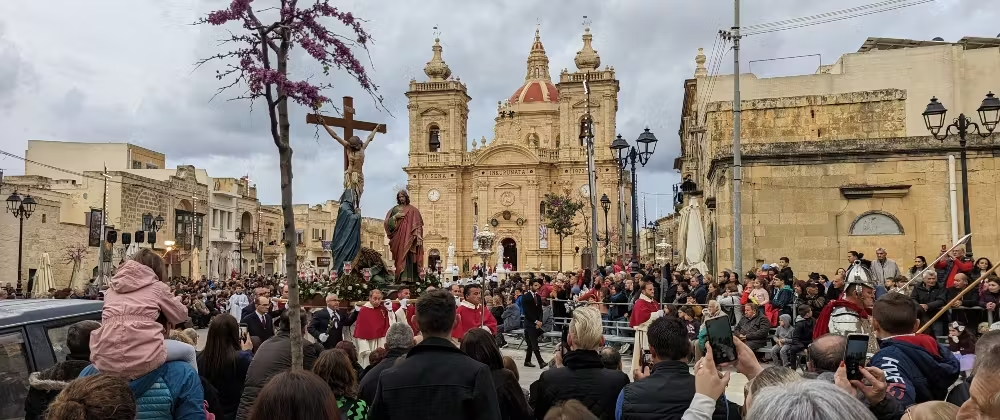
Sun worshippers should head to Malta in the summer, when average highs of 30°C make it ideal for swimming, sunbathing, and enjoying outdoor activities.
Summer is the busiest and most expensive time of the year though. Those looking to avoid the crowds and save some money should consider spring and autumn – spring promises colourful blooms and a vibrant atmosphere, and autumn is a great time to explore Malta's many historical sites and enjoy outdoor activities.
Winters are mild compared to other European destinations, and with less tourists around this is a great time to explore local culture and historic sites. Some attractions may have reduced hours or be closed, so make sure to check before you travel.
Being a Catholic country, Christmas and Easter are a big deal in Malta. You can expect large crowds and some attractions, bars and restaurants to be closed during this period, but that doesn't mean you should avoid this period – the elaborate Good Friday processions all over the island are a sight to behold.
Getting to Malta
Malta has one airport, close to the capital Valletta. It's easy to reach Malta by air, with direct flights from London taking around 3 and a half hours.
Malta is also a popular cruise destination, with ships regularly docking in Valletta Harbour. The cruise port is a 20-minute uphill walk to the city centre, but you can avoid the steep incline by taking the Barrakka lift. It costs €1 per person and will bring you to the Upper Barrakka Gardens, which offer some of the best views of the harbour.
Getting around Malta
Getting around the islands can be pretty easy if you know how, with regular buses and ferries. Or you can always hire a car.
By car
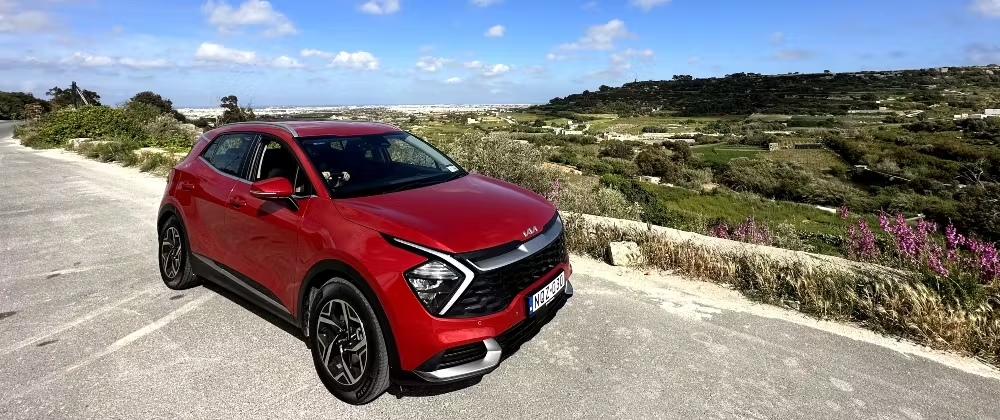
It's easy to hire a car in Malta, and it's a great option for getting around thanks to the flexibility it offers you. Plus they drive on the left in Malta so it's easy getting used to driving there.
Driving can be a challenge depending on where you go – expect narrow roads and not much parking in the old parts of towns and cities as well as rural areas. The island doesn't have any motorways, but most of the main roads are dual carriageways.
By bus
Malta has a very efficient bus network that connects the airport and cruise terminals to most major cities, resorts and attractions.
You can buy tickets from the driver, with either cash or contactless payments, or you can save some money with a travel card. There's a choice of cards available, which include unlimited travel from one day up to 12. Some even include travel on the ferry to and from Gozo. You can buy travel cards at any information office or ticket station.
It's easy to plan your journey too, either from the timetables online, or the app which provides real-time updates so you know how long you can expect to wait for the next bus.
By taxi
Getting a taxi in Malta is a great option if you're a little nervous of the roads in rural areas. There are plenty of taxi companies to choose from, and both Bolt and Uber are widely used.
By boat
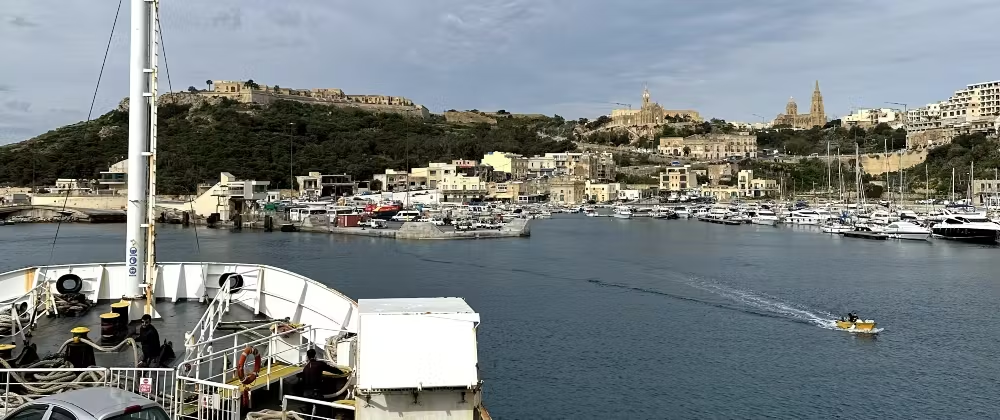
If you're planning on visiting Gozo or the smaller island of Comino you'll need to take a ferry. If you're driving to Gozo you can use the Gozo Channel ferry from Ċirkewwa to Mġarr, which takes 20 to 25 minutes and is suitable for cars and foot passengers. You don't need a ticket to board the ferry in mainland Malta – you pay in Mġarr on your return. The standard fare is €15.70 for cars and €4.65 for foot passengers. Take a look at the Gozo Channel website for more information.
Both Gozo Fast Ferry and Virtu Ferries Gozo run fast ferries from Valletta to Mġarr. They take around 45 minutes and are convenient for foot passengers staying in or east of Valletta, but not if you're driving. You'll need a ticket to board a ferry in Valletta, which can be bought online or at the ferry terminal – a standard one-way fare costs €7.50.
High winds can make the Maltese sea quite choppy. Ferries can be cancelled when the weather gets particularly bad, so check the forecast before you travel. If you're prone to seasickness, consider using the service from Ċirkewwa even if you're staying nearer to Valletta. Since the fast ferries are smaller, they tend to be affected more by the sea and make for a bumpier ride. And while it might mean more time in a bus or taxi, it'll mean 20 minutes less in a boat.
If you want to reach Comino the ferry takes around 25 minutes and costs €10 for a return – you can board it from Ċirkewwa or Mġarr harbour. Or, you could head to the island on a guided boat tour.
Top
Malta ranks 29th on the Good Trip Index
This score is calculated based on Sustainability, Human Rights, Women's Rights, Press Freedom, Quality of Life, LGBTQI+ Rights and Animal welfare
Find out moreWhere to stay in Malta
Like many islands in the Mediterranean, Malta has a decent combination of resorts providing historical attractions, lively nightlife, and beachside bliss. Here is our pick of the bunch…
Valletta
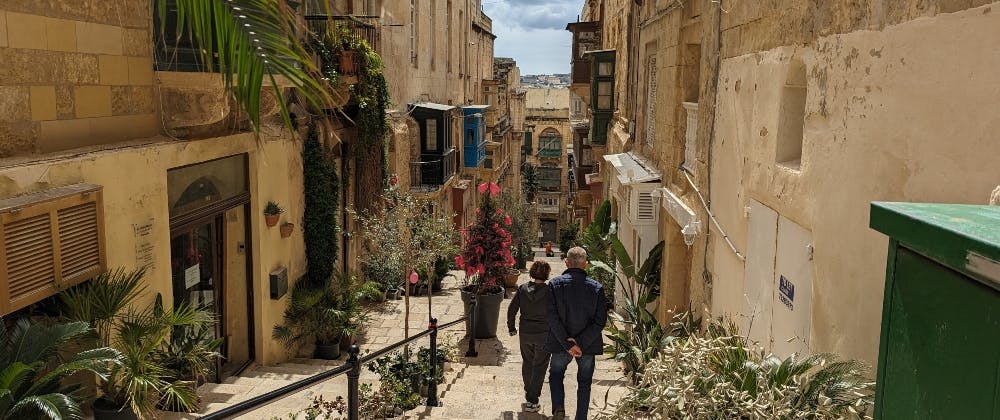
Valletta was founded in 1566 by the Knights of St John, who relocated to the island to defend it from pirates and the Ottoman Empire. It was built after the Great Siege of 1565 in which the 700 knights as well 8,000 soldiers managed to defend the island from an Ottoman invasion force of 40,000. Many of the original fortifications were destroyed and so a new fortified capital, Valletta, was built.
This beautiful city is a UNESCO World Heritage Site thanks to its gorgeous architecture and rich history. As you explore you'll discover the St John's Co-Cathedral, the Grandmaster's Palace where the head of the Knights of St John once resided, and the National Museum of Fine Art. There's a lovely square in the centre too, filled with charming boutiques and cafes.
Mdina
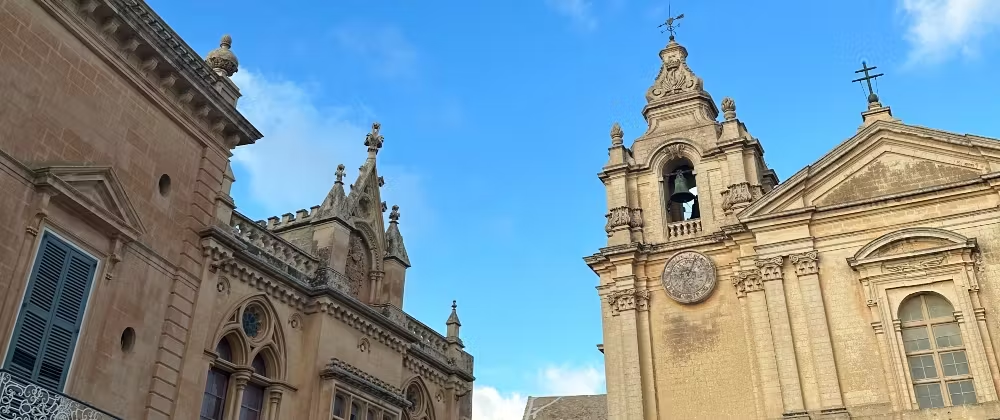
'The Silent City' Mdina is a fortified city in northern Malta which served as the captial until the medieval period. Much like Valletta the varied history is evident in the architecture of the city, from medieval to Baroque. Highlights include the Baroque St Paul's Cathederal and the Mdina Gate, the main entrance to the city.
You can also explore the roman ruins and catacombs or visit the Mdina Dungeons Museum to get a feel for life under medieval rule.
Mosta
Mosta is a growing city found in northern central Malta. It's famous for being home to the Sanctuary Basilica of the Assumption of Our Lady, or the Mosta Dome as it's more commonly known. The Mosta Dome is one of the largest unsupported domes in the world – it took nearly 27 years to finish and it was built by volunteer labour from the parish.
During WW2 Malta was heavily bombed, and you can see a replica of a bomb that hit the dome in 1942 – it failed to explode and the detonator was removed.
St Julian's
St Julian's is one part traditional seaside town and one part modern holiday resort – a popular destination for tourists all year round. There's a great choice of hotels to suit every budget and useful travel connections to the rest of the island too.
St Julian's is also home to Paceville, the lively heart of the resort's nightlife. It's filled with plenty of bars and nightclubs and even a casino.
Sliema
Sliema is a popular resort that lies just across the harbour from Valletta. It has a number of historical attractions as well as a lengthy promenade that runs for 10km all the way to the neighbouring resort of St Julian's.
What makes Sliema an ideal holiday location, along with its affordable hotels and apartments, is its convenient location between Valletta and St Julian's, allowing you to easily combine the cultural heritage of one with the lively nightlife of the other.
Mellieħa
If you're looking for a beach holiday then Mellieħa is probably the best place for it in Malta. While the island isn't known for its beaches, Mellieħa and its scenic bay are home to Malta's biggest sandy beach.
While the beach is very popular and often quite busy, especially in summer, the resort itself is actually quite quaint and peaceful. It's a lovely place to explore and offers a glimpse into traditional Maltese village life.
Best beaches in Malta
Mellieħa Bay
As mentioned above, Mellieħa Bay is Malta's largest sandy beach. It offers shallow, calm waters and lots of facilities that make it a great spot for families with kids.
Golden Bay
Golden Bay is known for its golden sands and crystal-clear turquoise waters. With picturesque views of the surrounding cliffs, it's a great spot in the northwest of mainland Malta for swimming, sunbathing and water sports.
Riviera Beach
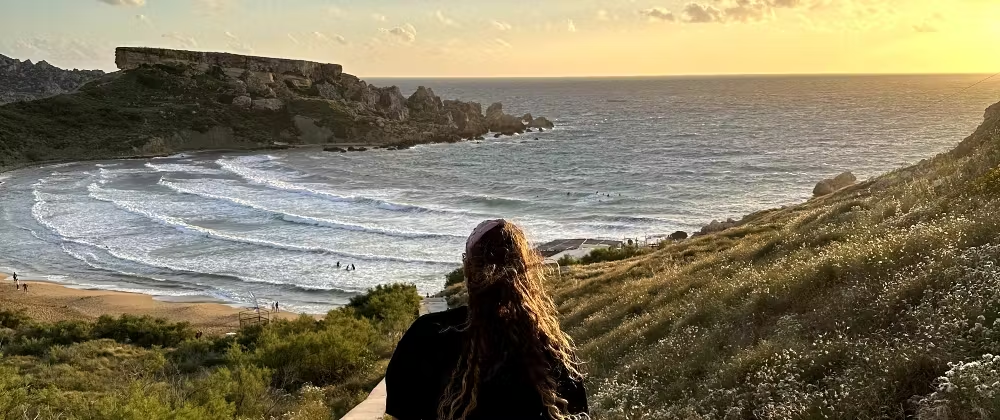
Just a 15-minute walk away from Golden Bay you'll find Riviera Beach, which is worth the trip alone for the views from high in the cliffs. This is a great place for watersports and sunbathing, or why not enjoy a drink with a view at Singita Miracle Beach bar?
The Blue Lagoon
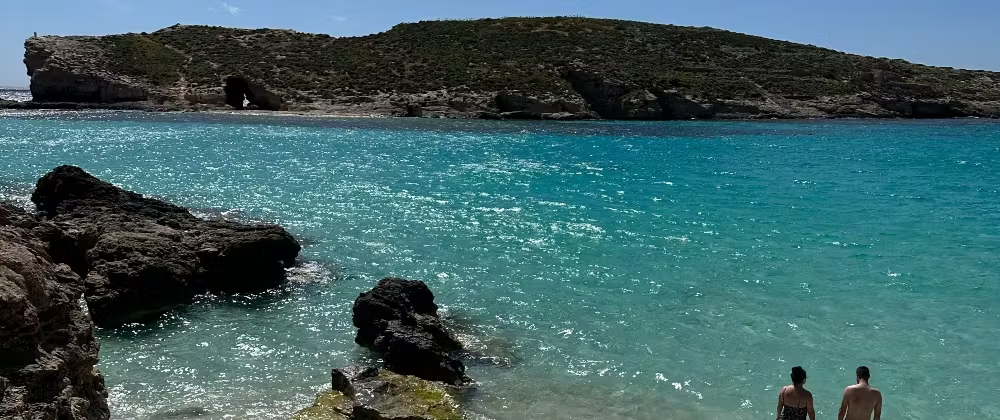
A day trip to Comino should absolutely be on your to do list, and when you get there make a beeline to the Blue Lagoon. With crystal-clear, temperate waters and very little waves, it's essentially a giant swimming pool with wonderful rocky hillside views.
Being this beautiful, the lagoon does get quite busy. We'd recommend arriving early to beat the crowds and hiring a sun lounger on the small sandy beach.
Ramla Bay
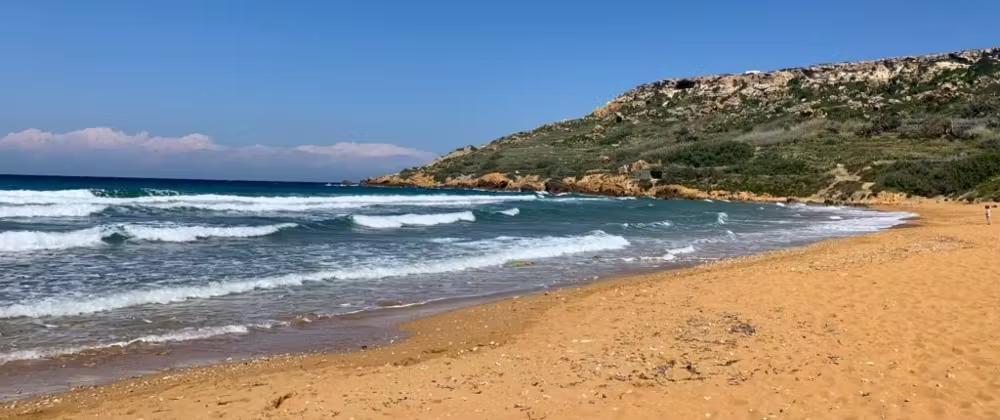
Ramla Bay is the largest beach in Gozo and, thanks to its characterful red sands, is arguably its prettiest.
It's easy to get to and has lots of free parking spaces. And when you're there, you'll find a restaurant, coffee shop, plenty of ice cream, and picture-perfect views.
What to eat in Malta
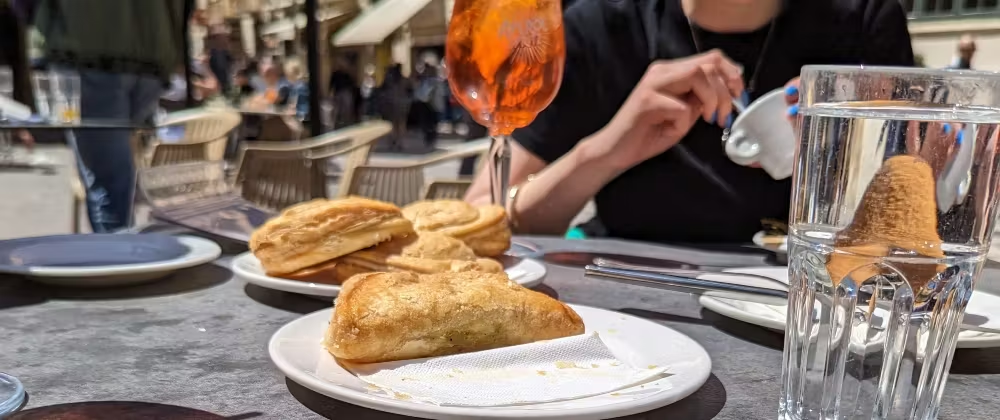
Malta has no shortage of unique delicacies to try while you're there, thanks to the many cultures that have occupied the islands across their history.
The first thing you need to try is a pastizzi. These savoury pastries have a flaky, buttery dough and are traditionally filled with either ricotta cheese or mushy peas. They're the perfect on-the-go snack to be grabbed from hole-in-the-wall pastizzeries that are dotted around the island. The ones pictured above cost a very reasonable €1.20 each from Caffe Cordina in Valletta – which is worth a visit alone for the striking artwork displayed on the walls and ceiling – but they can be found as cheaply as €0.40 if you venture outside the big towns and cities.
Another favourite is bragioli, or beef olives. They aren't olives at all in fact, but thin strips of steak wrapped around a filling (usually bacon, breadcrumbs and seasoning) and braised in red wine. Rabbit stew is a local staple, as is kapunata – a Maltese variation of ratatouille.
If you're a fan of seafood then visit Marsaxlokk on Sunday mornings for the fish market, where you can try aljotta (Maltese fish soup) and rich pasta sauces made with squid and octopus.
For something sweet try kannoli (fried pastry tubes filled with sweet ricotta cheese) or helwa tat-tork, a kind of fudge made with tahini.
Visiting Gozo and Comino from Malta
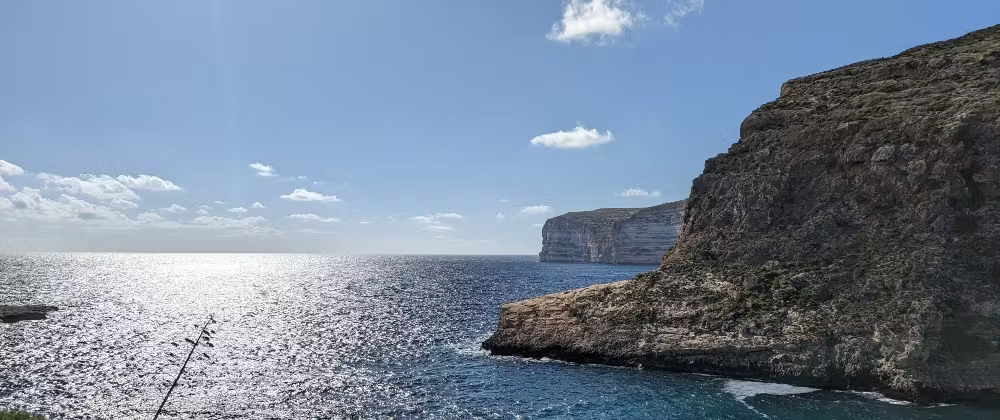
If you're visiting Malta you should absolutely spend some time on the smaller islands of Gozo and Comino which, while part of Malta, have their own unique identities.
Gozo has many of the country's best attractions, including the Inland Sea and the medieval Citadel. Its small size and stunning natural scenery make it ideal for exploring on foot. Plus, thanks to its total lack of light pollution, Gozo is an excellent place for stargazing.
In between Malta and Gozo lies the smaller island of Comino which is populated by a grand total of two people. The waters here are renowned for being crystal clear so the lagoons and inlets are popular with swimmers and divers.
It's also home to the 16th-century Santa Marija Tower (you can guess who built it). Throughout its history the tower has been used to defend against Ottomans, as an isolation hospital for plague patients, and more recently as a prisoner of war camp.
The Blue Hole
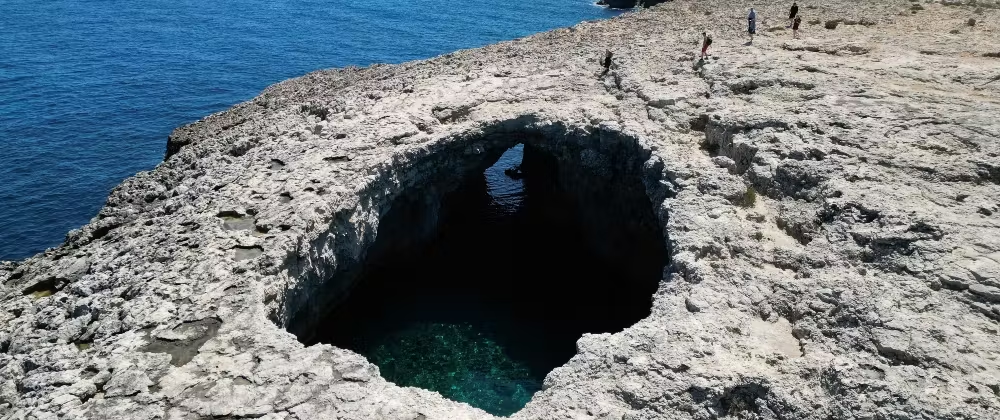
The Blue Hole is one of the most popular and striking locations on the island of Gozo. Set in a coastal inlet, this natural, circular hole is connected to the open sea by an arch 10m below the surface of the water.
It's more than 60m deep and a very popular spot with scuba divers as it's home to a fascinating seascape of fallen debris and natural rock formations, as well as plenty of sea life including groupers and moray eels.
If you're not an experienced scuba diver but still want to explore the sea here, there's an area of shallows nearby called the Coral Gardens and it's ideal for snorkelling.
Victoria and the Citadel

The Citadel, or ic-Cittadella, is a vast medieval fort in the Gozitan capital Victoria that sits on a hill and has defended the island of Gozo since the 1500s, although the area has been inhabited for thousands of years.
The Knights of St John added fortifications to the area and within the walls you can find a cathedral, some churches and a maze of narrow streets lined by medieval buildings. In the 16th century it was law that all residents of the island had to spend the night within the walls of the fortress to keep them safe.
Nowadays the Citadel is a popular hub, with many of the old buildings occupied by cafes and restaurants, as well as shops selling a selection of local crafts, cheeses, wine and other produce – a perfect place to pick up souvenirs.
Make sure to check out the rest of Victoria while you're there. Independence Square has a great daily market, and the marble covered St George's Basilica is filled with impressive paintings and surrounded by charming narrow streets bursting with bars, restaurants and little shops.
Ġgantija Temples
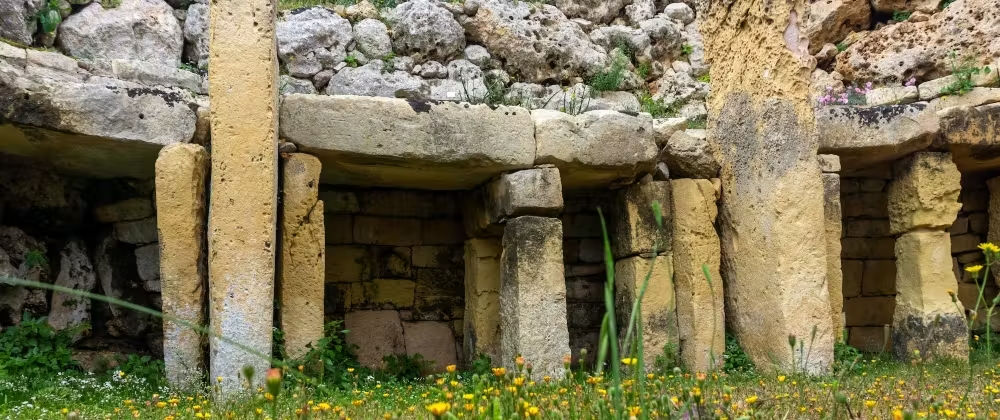
Head to Xagħra to see the Ġgantija monalithic temple complex, a UNESCO World Heritage Site from the Neolothic era that predates both the Egyptian pyramids and Stonehenge.
Nobody is completely sure how the complex was built, but locals do have an explanation. The clue is in the name – 'ġgantija' means 'giant', and it's believed that only giants could have carried such large rocks and put together the structure. Some of the rocks are heavier than 5 tons, which does add some weight to the theory.
Malta for families
Malta has everything you need for the perfect family holiday. Mellieħa Bay, Golden Bay and Ramla Bay are safe for children to swim, play and build sandcastles thanks to calm, shallow waters – just be on the lookout for jellyfish.
There are lots of theme parks around the island, including Popeye Village – a film set from the 1980s movie 'Popeye' starring Robin Williams and Shelley Duvall that's now full of rides, shows and museums. There are water parks too if that's more your sort of thing – Splash & Fun Water Park is a great option.
Elsewhere, Malta's abundance of historic sites, family-friendly attractions like the Malta National Aquarium and outdoor activities like hiking, boat tours and water sports could keep the kids entertained for hours. And you'll have no trouble finding family-friendly accommodation, whether you're after a resort, hotel or self-catering apartment.
Accessibility in Malta
You'll find many of Malta's top attractions like St. John's Co-Cathedral and the Ħaġar Qim temples have been adapted with accessibility in mind. Not all sites will have the same level of accessibility, so it's worth checking directly with the site before you travel.
In terms of getting around, public transport in Malta is generally accessible – buses usually have ramps and space for wheelchair users, although it's best to check with the specific bus route you plan on using. Both the fast ferries and the Gozo Channel ferry are wheelchair accessible.
Major tourist areas like Valletta and popular beaches have seen improvements in accessible pathways and facilities, but older and rural areas may be more difficult to navigate.
Malta for LGBTQI+ travellers
Malta has topped the Holiday Extras Good Trip Index for LGBTQI+ rights for two years running. Same-sex relations have been legal since 1973, same-sex marriage since 2017, and discrimination based on sexual orientation or gender identity is illegal. It's a great place for anyone to visit.
Valletta and nearby Paceville are where much of the LGBTQI+ scene centres. You'll find lots of bars, clubs, accommodation and events that are LGBTQI+ friendly – the annual Pride celebrations are worth a visit, which usually take place in September.
While Malta is generally accepting, public attitudes can differ particularly in rural and more conservative areas.
Top LGBTQI+ friendly destinations
Celebrate pride, explore LGBTQI+ heritage, culture and art, and feel welcomed in some of the best countries in the world for LGBTQI+ travellers
Find out more...Sustainable tourism in Malta
Malta is an area of stunning natural beauty, and sustainability is a growing focus as the country wants to keep it that way.
If you want to have a more sustainable trip to Malta, there are a few things you can do. One great way to reduce your impact on the environment is walk or cycle where you can, which is one of the best ways to explore Malta's beautiful landscapes. If this isn't possible, Malta's public transport service is an excellent alternative to hiring a car or taxi.
Also, the influx of tourists during peak season adds a lot of pressure to the island's infrastructure and environment – so consider visiting out of season to reduce this impact.
Fuel your wanderlust
Looking for the best beaches in Spain, where to take your family skiing or which Greek Island is best for partying? Well you've come to the right place.
Discover more...Malta FAQs
How do I get from Malta International Airport to Valletta?
Malta International Airport is around a 20-minute drive from Valletta. You could get a taxi from the airport or prebook an airport transfer. Or, if you're hiring a car you can pick it up straight from the airport.
You could also take the X4 bus from the airport to Valletta. While it takes longer, it is the cheaper option.
Is it safe to drink the tap water in Malta?
Tap water is safe to drink in Malta. However, some people don't like the taste of Maltese tap water and choose to drink bottled water.
What is the best month to visit Malta?
The best month to visit Malta depends on what you plan on doing while you're there. But for our money, we'd recommend travelling in May or June. The weather is warm – but not too warm – and the crowds are smaller than in July and August, which means you'll have more room on the beach and at popular tourist sites.
What are the top tourist attractions in Malta
Malta is full of historic, cultural, natural, and family-oriented experiences to enjoy. The UNESCO World Heritage Site and capital city Valletta is a great place to start, where you'll find St John's Co-Cathedral, the Upper Barrakka Gardens, the Grand Master's Palace, and the National Museum of Archaeology.
Elsewhere, Ħaġar Qim and Mnajdra are among the oldest free-standing structures in the world and provide a glimpse into Malta's prehistoric past. And the fortified medieval town Mdina with its narrow streets, palaces and amazing views is of great cultural significance.
Or, take a boat trip to Comino and enjoy the crystal-clear waters of the Blue Lagoon – the perfect place for swimming, diving, and photo opportunities.
What is the capital of Malta?
The capital of Malta is Valletta, which is known for its rich history, architectural beauty, and strategic fortifications. It's a UNESCO World Heritage Site, and was founded by the Knights of St John in the 16th century.







